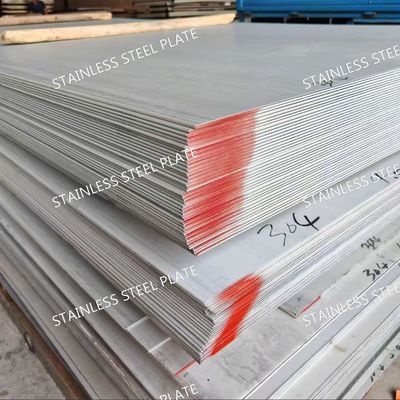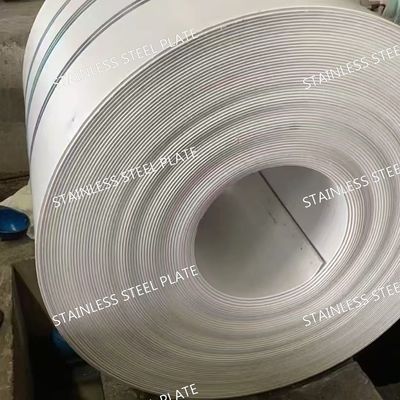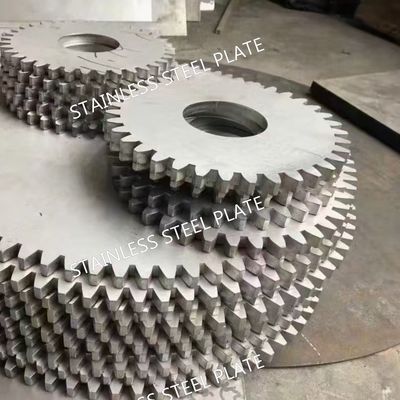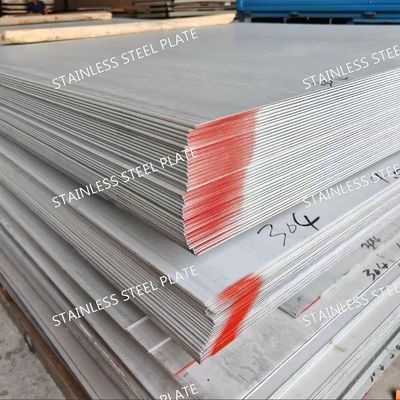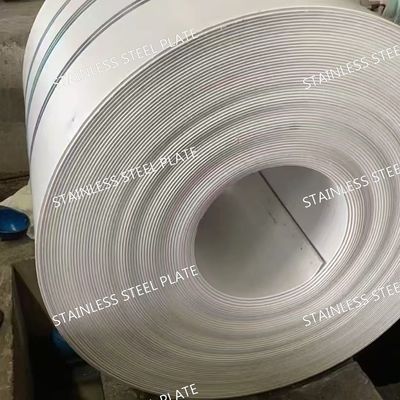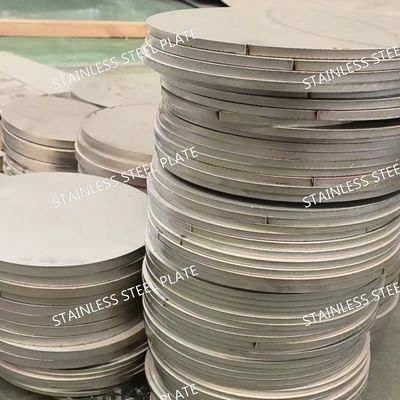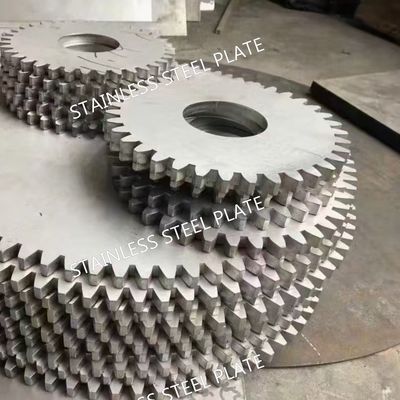-
Прокладка нержавеющей стали
-
Лист нержавеющей стали
-
Плита нержавеющей стали
-
труба нержавеющей стали
-
Адвокатура нержавеющей стали
-
Гальванизированная стальная катушка
-
Стальная пластина
-
стальной круглый бар
-
сплав никеля
-
Безшовная стальная труба
-
Луч нержавеющей стали
-
Лист медной плиты
-
Медная круглая Адвокатура
-
 Raian IonescuМатериальное качество очень хорошее. мы имеем объединить больше чем 10 лет. Они торгуют видами серий стального материала. Полностью материальное качество хорошее. Они обязанность для полностью материального качества. Мы строгаем для того чтобы продолжать объединить с ними в будущем
Raian IonescuМатериальное качество очень хорошее. мы имеем объединить больше чем 10 лет. Они торгуют видами серий стального материала. Полностью материальное качество хорошее. Они обязанность для полностью материального качества. Мы строгаем для того чтобы продолжать объединить с ними в будущем
Cold Rolled and Hot Rolled 317L Stainless Steel Plate for Heat Exchanger Applications
| Место происхождения | Китай |
|---|---|
| Фирменное наименование | BAOSTEEL TISCO |
| Сертификация | ISO |
| Номер модели | 317L / S31703 |
| Количество мин заказа | 50 кг |
| Цена | 5 - 8 USD/Kg |
| Упаковывая детали | стандартная упаковка для экспорта |
| Время доставки | 5 - 12 дней на основе количества |
| Условия оплаты | Л/К, Т/Т, Вестерн Юнион |
| Поставка способности | 20ton в неделю |

Свяжитесь я бесплатно образцы и талоны.
Whatsapp:0086 18588475571
Wechat: 0086 18588475571
Skype: sales10@aixton.com
Если вы имеете любую заботу, то мы предусматриваем 24-часовую интерактивную справку.
x| Продукты | листы из нержавеющей стали | Оценка | 317Л/С31703 |
|---|---|---|---|
| Толщина | 1,0-80,0 мм | Технический | холоднокатаный, горячекатаный, кованый |
| Ширина | 1000mm 1219mm 1500mm или таможни как запрос | Поверхность | 2B БА No.1 |
| Стандартный | DIN EN ASTM GB JIS | минимальный заказ | 1 тонна |
Cold Rolled and Hot Rolled 317L Stainless Steel Plate for Heat Exchanger Applications
Stainless Steel Sheet Specifications
| Name | 317L stainless steel sheet |
| Our Grade |
200 Series: 201 202 300 Series: 301 304,304L,304H,309S,310S,314,316L,316Ti,316H,316LN,317L,321,329,347 400 Series: 409L,410,410S,416,420,430,431,436L.439,441,443,444,445,446 Super Stainless Steel: 904L,926,254SMO,654SMO,15-5PH,17-4PH,17-7PH.etc Nickel Alloy: C276, C22,G35,Alloy X,Monel 400,K500,Inconel 600,601,617,625,718,Incoloy 800,800H,800HT,825.etc |
| Technique | Hot Rolled, Cold Rolled,Forged |
| Standard | JIS, AISI, ASTM, DIN, TUV, BV, SUS, etc |
| Thickness | 0.1 – 80.0mm |
| Width range | 10mm – 2000mm |
| Length | Customized |
| Finish | 2B, BA, No.4, 8k, Brushed,Hairline,PVD Coating,Sandblasted |
| Service | Laser Cutting, Bending |
| Sample | Available |
Introduction
In the realm of industrial heat exchangers, material selection is paramount for ensuring long-term performance, efficiency, and cost-effectiveness. Stainless steel, particularly 317L stainless steel, has gained significant popularity due to its exceptional corrosion resistance, high temperature endurance, and mechanical properties. When it comes to heat exchanger applications, both cold rolled and hot rolled 317L stainless steel plates offer a superior balance of durability and performance.
This versatile alloy, engineered for demanding environments such as chemical processing plants, power stations, and desalination facilities, stands out due to its resistance to pitting, crevice corrosion, and stress corrosion cracking. With its high molybdenum content and low carbon formulation, 317L is especially suited for high-temperature operations, where heat exchangers come into constant contact with aggressive fluids, acids, and gases. In this article, we will explore the benefits, properties, and applications of cold rolled and hot rolled 317L stainless steel plates in heat exchanger systems.
What is 317L Stainless Steel?
317L is an austenitic stainless steel alloy that contains high levels of chromium (18-20%), nickel (11-15%), and molybdenum (3-4%). This combination gives the steel enhanced resistance to a variety of corrosive environments, particularly chloride and acidic solutions. The "L" designation indicates that this grade has low carbon content (≤ 0.03%), which significantly reduces the risk of carbide precipitation and subsequent intergranular corrosion after welding or exposure to high temperatures. This makes 317L particularly well-suited for heat exchangers in corrosive environments.
Both cold rolled and hot rolled versions of 317L offer distinct advantages based on their manufacturing processes, but both forms excel in corrosion resistance and are ideal for heat exchanger applications.
Cold Rolled vs. Hot Rolled 317L Stainless Steel Plates
Cold Rolled 317L Stainless Steel Plate
Cold rolling involves passing the stainless steel through rollers at room temperature to reduce its thickness and improve surface finish. The process produces plates with superior dimensional accuracy, smooth surfaces, and increased mechanical strength. Cold rolled 317L plates are typically used in applications requiring precise tolerances and a high-quality finish, such as in heat exchangers where surface area and heat transfer efficiency are critical.
Advantages of Cold Rolled 317L Plate
-
Smooth Surface Finish
Cold rolling provides a fine, smooth surface finish (commonly 2B or No.4) that is ideal for heat exchangers, where clean, polished surfaces help improve thermal conductivity and reduce fouling. -
Enhanced Mechanical Properties
The cold working process increases the strength and hardness of the material. This makes cold rolled 317L plates suitable for applications where high mechanical strength and resistance to deformation are necessary. -
Precise Dimensions
Cold rolled plates have excellent dimensional accuracy, which is crucial for fabricating components that need to fit precisely into heat exchanger systems. The thin tolerances of cold rolled plates ensure efficient, reliable performance. -
Improved Corrosion Resistance
Cold rolling enhances the protective oxide layer on the surface, further increasing resistance to corrosion, especially in aggressive environments like heat exchangers in chemical or marine applications.
Hot Rolled 317L Stainless Steel Plate
Hot rolling is a manufacturing process where the steel is heated above its recrystallization temperature and then passed through rollers to reduce its thickness. The resulting hot rolled 317L plates have a rougher surface finish and may have greater variations in thickness, but they are cost-effective and offer excellent mechanical properties for larger-scale applications.
Advantages of Hot Rolled 317L Plate
-
Cost-Effective for Large Applications
Hot rolling is generally more economical than cold rolling, making it a good option for larger heat exchangers or systems where high material volume is required. -
Better Formability
Hot rolled 317L plates can be easily further processed through forging, bending, and welding, which is advantageous for custom-designed heat exchangers with complex geometries. -
Superior Resistance to High Temperature Corrosion
Hot rolled 317L plates maintain excellent resistance to high-temperature environments, which is crucial in heat exchangers that operate under extreme thermal conditions, such as those found in petrochemical refineries or power plants. -
Ideal for Heavy-Duty Applications
While the surface finish may not be as smooth as cold rolled plates, hot rolled plates are well-suited for applications where mechanical strength and resistance to high-pressure environments are more critical than surface aesthetics.
Key Properties of 317L Stainless Steel for Heat Exchanger Applications
Both cold rolled and hot rolled 317L stainless steel plates exhibit remarkable properties that make them ideal for heat exchangers:
| Property | Value (Typical) | Significance for Heat Exchangers |
|---|---|---|
| Tensile Strength | 515 MPa (75 ksi) | Ensures durability under mechanical stress and pressure. |
| Yield Strength | 205 MPa (30 ksi) | Supports structural integrity under internal pressure. |
| Elongation | 35–40% | Indicates high ductility, important for forming and welding. |
| Hardness | ≤ 217 HB | Provides resistance to surface wear and tear. |
| Corrosion Resistance | Excellent | Withstands aggressive chemical and acidic environments. |
| Pitting Resistance | High (PREN > 35) | Prevents localized corrosion in saline or chloride-rich conditions. |
| Thermal Conductivity | 16 W/m·K | Allows effective heat transfer in exchanger systems. |
| Density | 7.9 g/cm³ | Typical for austenitic stainless steels; important for weight calculations. |
| Coefficient of Thermal Expansion | 16.0 × 10⁻⁶ /°C | Ensures dimensional stability under fluctuating temperatures. |
The combination of these properties allows 317L stainless steel to perform efficiently in heat exchangers, providing reliable, long-lasting service even in demanding thermal and chemical environments.
Heat Exchanger Applications of 317L Stainless Steel Plates
The high corrosion resistance and thermal stability of 317L stainless steel make it the material of choice for various types of heat exchangers used in industries such as petrochemicals, energy generation, desalination, food processing, and pharmaceuticals.
1. Chemical Processing Heat Exchangers
Heat exchangers in chemical plants are exposed to highly aggressive chemicals, including acids, alkalis, and solvents. 317L stainless steel is particularly effective in these applications due to its ability to resist attack from sulfuric acid, hydrochloric acid, and other corrosive substances. Cold rolled 317L is typically used for applications requiring high surface finish standards, such as those involving heat exchangers in reactors, condensers, and evaporators.
2. Power Plant Heat Exchangers
In thermal power plants, heat exchangers handle high temperatures and steam, often in the presence of chlorides or other aggressive fluids. Hot rolled 317L stainless steel plates are used in these systems because of their strength, ease of fabrication, and ability to resist high-temperature corrosion. This material helps extend the life of the equipment and improve energy efficiency.
3. Desalination Plants
Seawater desalination facilities use heat exchangers for distillation and other separation processes. 317L stainless steel is ideal in these applications due to its excellent resistance to chloride-induced pitting corrosion. Cold rolled plates are often used in areas requiring smooth, non-fouling surfaces, while hot rolled plates may be chosen for larger components or systems under high thermal stress.
4. Food and Dairy Industry Heat Exchangers
Heat exchangers used in the food and beverage industry must meet strict hygiene standards while also withstanding exposure to acidic solutions like citric acid or lactic acid. The high corrosion resistance of 317L ensures a long service life, even when subjected to continuous cleaning and sterilization processes. Cold rolled 317L stainless steel plates are favored in food applications due to their smooth finish and ease of cleaning.
5. Pharmaceutical Manufacturing
In pharmaceutical plants, heat exchangers must handle both high temperatures and corrosive chemicals, such as solvents and cleaning agents. 317L stainless steel provides the necessary corrosion resistance, especially in areas where the material must withstand prolonged exposure to harsh chemicals. The low carbon content ensures minimal risk of sensitization, which is critical for maintaining the integrity of pharmaceutical processes.
Comparing Cold Rolled and Hot Rolled 317L Stainless Steel for Heat Exchangers
| Property / Feature | Cold Rolled 317L | Hot Rolled 317L |
|---|---|---|
| Surface Finish | Smooth, polished (2B, No.4) | Rougher, mill finish |
| Mechanical Strength | Higher strength and hardness | Lower strength than cold rolled |
| Dimensional Accuracy | Precise, tight tolerances | Larger tolerances, less precise |
| Corrosion Resistance | Enhanced surface protection | Excellent, but slightly lower than cold rolled in some cases |
| Fabrication Ease | Harder to form but ideal for fine details | Easier to form and weld, suitable for larger, complex designs |
| Cost | More expensive |
![]()
![]()
![]()
![]()



